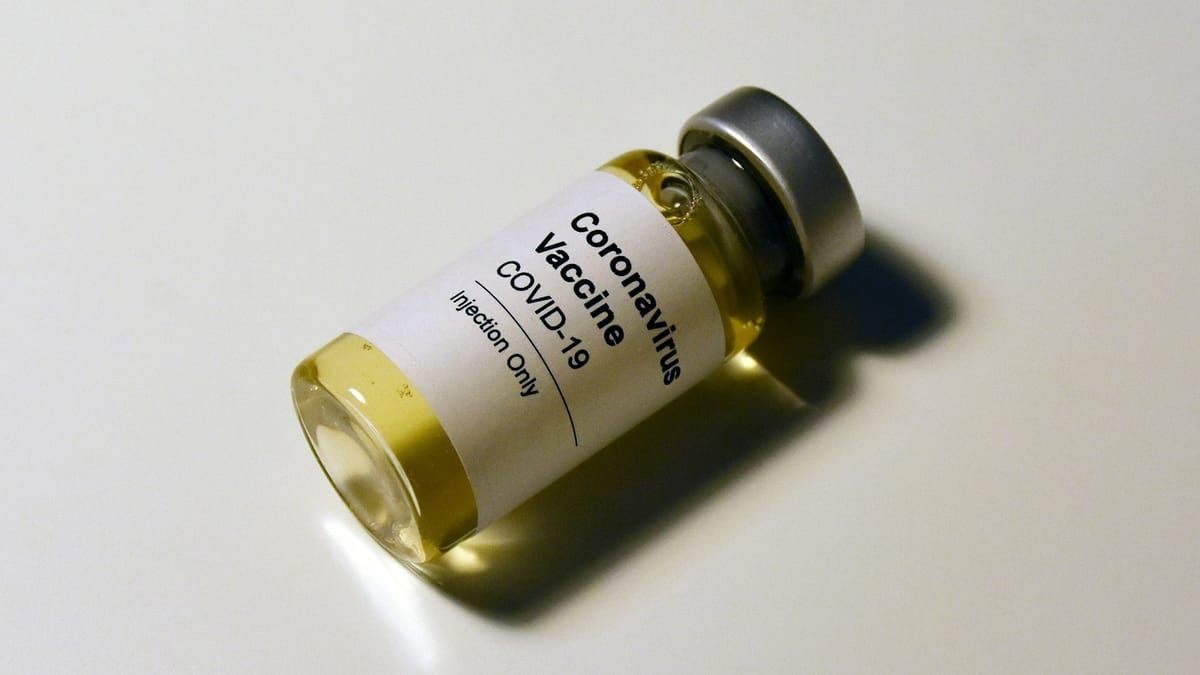Paxlovid: Your Ticket to Faster COVID-19 Recovery Revealed

Are you curious about the latest breakthroughs in COVID-19 treatment? Paxlovid, a promising antiviral therapy, has garnered attention for its potential to reduce hospitalization and death risks. In our battle against COVID-19, effective treatments are crucial, and Paxlovid shines as a beacon of hope. Delve into its efficacy, side effects, dosage guidelines, and considerations for special populations like pregnant individuals. Join us as we explore Paxlovid's potential in combating COVID-19 and unravel the complexities surrounding its dosage, administration, and rebound effects. Stay informed and empowered in the fight against the pandemic.
In the fight against COVID-19, effective treatments are crucial. Paxlovid offers hope, especially for high-risk individuals. Understanding its efficacy, side effects, dosage, and considerations for special populations like pregnant individuals is vital for healthcare providers and patients. Join us as we explore Paxlovid's effectiveness, potential side effects, dosage guidelines, safety during pregnancy, and rebound effects. Stay informed about this groundbreaking therapy.
Introduction to Paxlovid
Should I take Paxlovid if I get covid?
Here’s what to know.
The antiviral medication Paxlovid can significantly reduce COVID-19 symptoms and lower hospitalization risk, yet many eligible patients decline it.
A recent National Institutes of Health study found only 15 percent of qualified people took Paxlovid. While reasons remain uncertain, patients anecdotally cite worries about side effects or COVID rebound.
Paxlovid combines two antiviral drugs - nirmatrelvir and ritonavir - interfering with SARS-CoV-2 replication to potentially decrease symptom severity and duration. Clinical trials demonstrate Paxlovid’s efficacy in cutting hospitalization and death risk among high-risk groups.
However, no treatment lacks potential side effects. Individuals with certain conditions or taking specific medications may need to consult doctors before Paxlovid. Though rare, serious side effects linked to antivirals warrant consideration and discussion with providers.
Additionally, Paxlovid availability depends on location and healthcare infrastructure. Access limitations in some regions necessitate examining alternatives like public health COVID-19 guidelines.
While evidence supports Paxlovid’s benefits, informed discussion with providers regarding side effects and eligibility remains essential, especially given low usage rates among those qualified. Assessing personal risk factors and availability constraints allows fully weighing this treatment option against alternatives.
Understanding the Need for Paxlovid
Who should take Paxlovid?
Paxlovid must be taken within 5 days of COVID-19 symptom onset to be effective. Delaying treatment until symptoms worsen could render the antiviral ineffective.
"Taking Paxlovid at the 5-day mark, the virus may have already impacted the lungs with an inflammatory response," said Yale infectious disease expert Scott Roberts. "Starting treatment before viral load spikes can really blunt the overall disease impact."
Paxlovid is recommended for high-risk individuals 12 and up, including those 50+ since age significantly raises complication chances. Underlying conditions like obesity, hypertension, diabetes or immunodeficiencies also warrant consideration given increased severity risks.
"Age alone confers higher risks of complications," said Dr. Priya Nori, an infectious disease physician. "Obesity on its own also increases severity, separate from other factors."
Determining the Appropriate Candidates for PaxlovidInsights from a Seasoned Virologist
Paxlovid, Pfizer's novel antiviral medication, has surfaced as a treatment option for SARS-CoV-2 infected individuals. However, determining Paxlovid eligibility requires careful appraisal of evidence, guidelines and personal risk factors.
Paxlovid is intended for mild-moderate COVID-19 patients at high risk of progression to severe illness and hospitalization - typically older adults and those with conditions like diabetes, obesity, heart disease or compromised immunity. Immunocompromised patients and pregnant women may also be considered.
Clinical trials demonstrate Paxlovid can substantially reduce hospitalization and death risks in high-risk groups if administered early on. Thus, identifying and prioritizing those most likely to benefit is essential.
Healthcare providers play a vital role in evaluating patients for eligibility based on age, medical history, health status and potential drug interactions. Additionally, those with COVID-19 symptoms should promptly seek assessment for Paxlovid or other treatment options.
Challenges in Prescribing Paxlovid
Why aren’t more doctors prescribing Paxlovid?
It’s not clear. Some doctors hesitate to prescribe the antiviral medication because of how the drug can interact with other prescriptions a patient might be taking, experts say.
The NIH study found regional variations in the use of Paxlovid, ranging from near zero to close to 50 percent treated with the drug in health-care systems across the country. Parts of the lower Midwest and Southeast had “limited adoption,” according to the study. Utah, the Mid-Atlantic and the Northwest appeared to have the greatest uptake of the medication.
Josh Fessel, a co-author of the study and a senior clinical adviser at NIH, said the study doesn’t explain the difference in use, but researchers found that if half of those eligible to take Paxlovid had used the drug, nearly 48,000 deaths could have been prevented.
“If we increased the utilization, we could reasonably expect to see lives saved and hospitalizations prevented,” Fessel said.
Understanding the Factors Influencing the Prescription of Paxlovid Insights from a Virologist
Despite evidence that Paxlovid can reduce COVID-19 severity and hospitalizations, prescription rates lag expectations — likely due to:
- Limited availability. Manufacturing and distribution constraints creating regional shortages may necessitate strict eligibility criteria, restricting access.
- Complex prescription process. Providers must deliberately assess risks, history, and health status to determine appropriateness amidst logistical administration barriers.
- Clinical guidelines and recommendations. Adherence to standardized evidence-based protocols for Paxlovid across patient populations and scenarios varies among providers, impacting prescription levels.
- Awareness and education. Keeping providers updated on COVID-19 treatments is essential to enhance Paxlovid knowledge and confidence, improving prescription uptake. Patient awareness similarly critical.
- Cost and reimbursement considerations. Medication expenses and insurance coverage issues could limit patient and healthcare system access, especially in resource-constrained areas, creating financial Paxlovid barriers.
Navigating Paxlovid with Other Medications: Understanding Potential Interactions
One complicating factor in prescribing Paxlovid is that many high-risk patients are also taking medications for other conditions, and some of these drugs should not be taken with Paxlovid. The list of medications that Paxlovid can interact with includes certain cholesterol drugs, blood pressure and heart medications and migraine drugs. But in some cases, a doctor may advise patients that they can safely stop taking a drug before they start Paxlovid
Peter Chin-Hong, Professor in the UCSF Health Division of Infectious Diseases, suggests having a conversation with your physician now, so you’re not “scrambling to find somebody to answer your questions” about Paxlovid after you get sick.
Navigating Medication Interactions with Paxlovid
Why does Paxlovid taste bitter?
Paxlovid can leave a bitter, metallic taste in your mouth. Infectious-disease experts who have taken Paxlovid say they had the bitter taste but it was manageable. “It’s not unbearable at all,” Chin-Hong said. “I was still able to eat.”
The antiviral medication is a five-day course of nirmatrelvir and ritonavir taken in tablets twice a day. Nirmatrelvir “shuts down the virus-making factory” before the coronavirus is replicated by blocking the chemical needed to produce the virus, Chin-Hong said.
Ritonavir is what’s “causing the metallic taste,” Michael Thomas Osterholm, American epidemiologist, Regents Professor at the University of Minnesota School of Public Health said. It slows the metabolism of nirmatrelvir, keeping the drug in the body for a longer period of time.
Other possible side effects of Paxlovid include diarrhea, nausea, headaches and vomiting.
Dispelling Myths and Addressing Concerns
What’s the risk of rebound on Paxlovid?
Some avoid COVID-19 treatment Paxlovid over rebound fears - retesting positive after initial recovery post-treatment. But experts assert this risk shouldn’t deter Paxlovid for eligible groups.
“It’s still unclear if Paxlovid increases rebound rates,” said infectious disease specialist Dr. Scott Roberts, Yale Medicine infectious diseases specialist. However, he emphasized rebound isn’t reasonable grounds to refuse hospitalization-preventing Paxlovid.
Roberts explained rebound is typically low-risk with milder recurrent symptoms. CDC data shows comparable rebound likelihood between Paxlovid and non-Paxlovid groups. As CDC official Dr. Pragna Patel stated: “For high hospitalization/mortality risk populations, rebound probability doesn't outweigh Paxlovid benefits."
Rebound’s underlying causes remain uncertain; theories include the natural infection course or insufficient five-day Paxlovid duration. Regardless, the CDC advises assumed infectiousness for rebound patients, necessitating isolation and masking resumption.
- Viral Replication: Paxlovid inhibits SARS-CoV-2 replication, reducing viral load and alleviating COVID-19 symptoms. However, upon discontinuing treatment, no evidence indicates a viral replication rebound effect occurs.
- Symptom Relief: Although Paxlovid discontinuation may enable gradual symptom resolution as immunity clears the virus, no data shows stopping treatment causes sudden symptom worsening or recurrence.
- Long-Term Effects: While Paxlovid's long-term effects remain under study, the concept of rebound effects refers to short-term symptom changes. Currently, no evidence suggests Paxlovid discontinuation leads to adverse short-term outcomes.
- Consultation: Patients finishing Paxlovid concerned about potential rebound effects should consult providers. Personalized guidance can be offered based on medical history, current symptoms, and latest evidence.
Exploring Paxlovid's Potential Impact on Long COVID Insights from a Virologist
While Paxlovid has proven efficacy in mitigating COVID-19 severity and hospitalization risk, its specific impact on thwarting long COVID remains less clear and requires more research.
Currently, Paxlovid targets alleviating acute illness by inhibiting SARS-CoV-2 replication. Clinical trials have focused on hospitalization rates and short-term outcomes rather than long-term complication prevention.
Given long COVID's complex nature with persisting, variable symptoms affecting different bodily systems, directly assessing Paxlovid’s role is challenging. Long COVID may stem from factors like viral persistence, immune dysregulation, and tissue damage - not all readily addressed by antiviral medications alone.
However, by reducing the overall viral burden and inflammation, early Paxlovid intervention could plausibly minimize the risk of long-lasting issues. Curtailing acute COVID-19 severity and duration may help prevent prolonged disease courses and persistent symptoms.
In essence, while not definitively proven, Paxlovid shows promise in indirectly safeguarding against long COVID by optimizing early illness trajectories. Still, more research on the precise interactions is warranted, as multidimensional long COVID management likely demands combination strategies like anti-inflammatories, rehab, and supportive care.
Does Paxlovid lower risk for long COVID?
Research is mixed, but some studies suggest Paxlovid may reduce long COVID risk – lingering issues like brain fog post-infection. One large study found Paxlovid lowered long COVID likelihood by 26% in higher-risk groups like older adults. However, another study showed no risk reduction in vaccinated patients.
Estimates indicate 7-14% of U.S. adults have experienced ≥3 month long COVID symptoms. Said infectious disease expert Michael Osterholm: “I just wouldn’t risk long COVID – Paxlovid can cut sick days.”
Theoretically, lowering virus levels could mitigate chronic issues. But expert Priya Nori stated: “I've not seen definitive evidence Paxlovid helps or doesn’t help long COVID. More research is needed.”
What is the downside of taking Paxlovid?
As with any medication, considerations around Paxlovid, the COVID-19 antiviral, include:
- Side Effects: Common Paxlovid side effects are diarrhea, nausea and rash. Less common effects involve liver function changes and allergic reactions. While mostly mild, some side effects require medical attention.
- Drug Interactions: The ritonavir component can interact with other medications metabolized by the same liver enzymes, affecting their efficacy or risk profile. Informing providers about one’s medications is essential to avoid interactions.
- Limited Availability: Manufacturing and distribution limitations may constrain Paxlovid access, especially in high demand or resource-constrained areas. Providers may prioritize those at highest COVID-19 risk, restricting availability for others.
- Cost: Expenses may burden some patients depending on insurance coverage, policies and generic options. Individuals should consult providers and insurers regarding potential treatment costs.
Understanding Paxlovid Side Effects: What to Expect
Like any medication, Paxlovid may cause side effects for some patients. Possible adverse effects per clinical data and the manufacturer include:
- Nausea/Vomiting: Common gastrointestinal issues like nausea and vomiting can manifest shortly after taking Paxlovid. These tend to be mild and self-resolving.
- Diarrhea: Diarrhea is another potential side effect that is generally transient and mild to moderate in severity without needing intervention.
- Headache: Headaches are frequently reported during Paxlovid treatment. While typically mild, persistent headaches may require symptomatic over-the-counter pain relief.
- Fatigue: Some individuals experience more pronounced fatigue and tiredness with Paxlovid, especially early on. This is often temporary but can impair energy levels.
- Allergic Reactions: Rare allergic responses involve rashes, facial swelling and breathing issues. Any such reactions necessitate promptly alerting a healthcare provider.
- Liver Enzyme Spikes: Paxlovid can temporarily elevate liver enzymes in some patients. Individuals with preexisting hepatic conditions require regular liver function monitoring.
Notably, responses vary individually and not all patients encounter side effects. But being aware of potential adverse impacts can inform monitoring and prompt reaction if warranted.
Paxlovid Use During Pregnancy: What You Need to Know
Since pregnant people were excluded from initial Paxlovid trials, insufficient evidence exists to fully assess risks versus benefits in this group.
Consequently, Paxlovid use during pregnancy warrants caution and consideration only if potential rewards outweigh potential harms for both the pregnant individual and fetus. Providers may need to explore alternatives or closely monitor those requiring COVID-19 treatment while pregnant.
It is essential for expecting mothers to discuss options with their healthcare providers, who can offer personalized guidance based on unique factors like symptom severity, gestational stage, and underlying conditions.
As with any medication for pregnant individuals, Paxlovid decisions should be made collaboratively with providers, carefully weighing available evidence and guidelines regarding both risks and potential advantages. Ongoing monitoring for any resulting adverse impacts is also crucial.
Can a younger, healthy person take Paxlovid?
Yes. Some doctors prescribe the drug to people younger than 50. Younger, low-risk patients should weigh the side effects and rebound risk against the potential of a faster recovery, Chin-Hong said.
For adults who don’t fall into one of the high-risk categories, the benefit of taking Paxlovid “is less clear,” Nori said, because the likelihood they will have a serious case of covid is already low. “That becomes an individual decision,” she said.
Joseph Khabbaza, a pulmonologist and critical care physician at the Cleveland Clinic, said he believes any adult who wants Paxlovid could benefit from taking the drug.
“Even healthy people who have a crummy, flu-like illness have a quicker improvement in those symptoms,” Khabbaza said. “It can work pretty quickly.”
Considerations for Younger, Healthy Individuals Considering Paxlovid for COVID-19 Treatment
Consider these factors:
- Illness Severity: While young, healthy individuals face lower COVID-19 risks, the virus can still cause harm. Paxlovid's use hinges on symptom severity and personal risk tolerance.
- Transmission Risk: Even asymptomatic carriers can spread COVID-19. Paxlovid may help mitigate transmission by shortening illness duration.
- Healthcare Strain: By seeking early treatment, individuals can ease strain on healthcare systems and ensure resources for those in need.
- Personal Assessment: Consultation with healthcare providers is crucial. Factors like medical history and exposure risk inform the decision.
Remember, Paxlovid complements but doesn't replace vaccination. Vaccination remains key in preventing COVID-19 and its complications.
Exploring Paxlovid's Mechanism of Action
What does the drug Paxlovid do?
It is a combination therapy consisting of two drugs nirmatrelvir and ritonavir.
- Nirmatrelvir: This drug is a novel protease inhibitor that specifically targets the SARS-CoV-2 virus, the virus responsible for COVID-19. Protease inhibitors work by blocking the activity of viral protease enzymes, which are essential for the replication of the virus. By inhibiting viral protease activity, nirmatrelvir helps to prevent the virus from replicating and spreading within the body.
- Ritonavir: a pharmacokinetic enhancer that is used in combination with nirmatrelvir to increase its plasma levels and prolong its duration of action. Ritonavir accomplishes this by inhibiting certain enzymes in the liver that metabolize nirmatrelvir, thereby allowing nirmatrelvir to reach higher concentrations in the bloodstream and exert its antiviral effects more effectively.
Together, nirmatrelvir and ritonavir work synergistically to inhibit viral replication and reduce the severity and duration of COVID-19 symptoms. By targeting the underlying viral infection, Paxlovid aims to help individuals recover more quickly from COVID-19 and reduce the risk of progression to severe illness and hospitalization.
Understanding the Recommended Dosage of Paxlovid
Exploring the Optimal Dosing Regimen for Paxlovid
The recommended dose of Paxlovid (nirmatrelvir and ritonavir) for the treatment of COVID-19 is as follows:
- Paxlovid tablets: Each tablet of Paxlovid contains 300 mg of nirmatrelvir and 100 mg of ritonavir. The recommended dose is two tablets (600 mg nirmatrelvir/200 mg ritonavir) taken orally together twice daily (total daily dose1200 mg nirmatrelvir/400 mg ritonavir) for 5 days.
It's important to follow the dosing instructions provided by your healthcare provider or as indicated on the prescription label. Paxlovid should be taken with food to help improve absorption and reduce the risk of gastrointestinal side effects.
It's also essential to complete the full course of treatment as prescribed, even if you start to feel better before the treatment period is over. Stopping treatment prematurely may increase the risk of the virus not being fully suppressed and potentially lead to treatment failure or the development of drug resistance.
Determining Paxlovid's Onset of Action
How long does it take for Paxlovid to work?
Paxlovid's effectiveness in treating COVID-19 hinges on various factors, including the individual's health status and the stage of illness. Clinical studies highlight its potential in reducing hospitalization and death risks, particularly when administered early.
Studies suggest Paxlovid's antiviral effects may begin within days of treatment initiation, with improvements seen in symptoms and viral load within 5-7 days. However, responses vary among individuals, and immediate symptom relief isn't guaranteed. Timely treatment initiation optimizes Paxlovid's benefits, emphasizing its efficacy in mitigating viral replication and symptom severity.
While Paxlovid shows rapid action, its full effectiveness may take days to emerge. Early treatment remains paramount, underscoring Paxlovid's role as a pivotal tool in combating COVID-19.
Sarah's Dilemma: A Personal Encounter with COVID-19 Treatment
Sarah, a potential patient grappling with a positive COVID-19 test result, faced a pivotal decision regarding her treatment plan. Despite her youth and good health, uncertainty loomed large as she deliberated over whether Paxlovid should be part of her strategy.
Sitting in solitude, Sarah's mind buzzed with questions and concerns, the weight of potential illness pressing on her. While intrigued by the promise of Paxlovid, doubts lingered, fueled by fears of eligibility and side effects.
"What if Paxlovid isn't right for me?" she pondered, the uncertainty echoing in her thoughts. Determined to find clarity, Sarah resolved to consult her healthcare provider for guidance, armed with the resolve to navigate this journey with knowledge and support.
Key Takeaways
- Paxlovid, a combination therapy of nirmatrelvir and ritonavir, is vital for treating mild to moderate COVID-19, particularly in high-risk individuals.
- Early Paxlovid administration significantly cuts hospitalization and death risk in COVID-19 patients, showing promise in severe case prevention.
- Various factors contribute to Paxlovid's low prescription rate, including availability, clinical guidelines, and cost concerns.
- Determining Paxlovid candidates involves assessing risks, drug interactions, especially for pregnant individuals and those with medical conditions.
- Paxlovid side effects like nausea, vomiting, diarrhea, headache, and fatigue are generally mild and transient, requiring close monitoring.
- Discuss Paxlovid's metallic taste, medication interactions, and concerns about rebound effects with healthcare providers.
- Financial barriers and limited availability hinder Paxlovid access, requiring efforts for equitable access, especially for underserved populations.
- While effective against the original SARS-CoV-2 strain, Paxlovid's efficacy against emerging variants requires ongoing research.
- Continuous education for healthcare providers is essential to promote Paxlovid's awareness and evidence-based prescribing practices.
- Understanding Paxlovid's recommended dosage and treatment duration is crucial for effective COVID-19 management in diverse patient populations.
- Early Paxlovid treatment within 5 days of COVID-19 diagnosis reduces 28-day hospitalization risk by 26% and mortality risk by 73%.
- With 50% Paxlovid uptake and eligibility, around 15.5% of deaths and 5.4% of hospitalizations could be prevented between Dec 2021-Feb 2023.
Thank you for reading this post!
If you found it helpful or informative, please consider sharing a 7 day free trial with your friends, family, or colleagues who might benefit from it.
Your support helps me reach more people and spread awareness on important topics like this. Together, we can make a difference!
Citations:
- Paxlovid (nirmatrelvir/ritonavir) effectiveness against hospitalization and death in N3CA target trial emulation study
- https://pubmed.ncbi.nlm.nih.gov/35653428/
- https://www.nejm.org/doi/full/10.1056/nejmoa2118542
- https://www.yalemedicine.org/news/13-things-to-know-paxlovid-covid-19
- https://www.thelancet.com/journals/lanwpc/article/PIIS2666-6065(23)00012-3/fulltext
- https://classic.clinicaltrials.gov/ct2/show/NCT05576662
- https://wwwnc.cdc.gov/eid/article/30/2/23-0835_article
- https://www.paxlovidhcp.com/clinical-studies
- https://www.yalemedicine.org/clinical-trials/pax-lc-a-decentralized-randomized-phase-2-efficacy-and-safety-study-of-nirmatrelvir-ritonavir
- https://newsroom.clevelandclinic.org/2023/09/28/research-finds-paxlovid-and-legevrio-reduced-covid-19-hospitalization-and-death/
- https://jamanetwork.com/journals/jama/article-abstract/2813149
- https://medicine.yale.edu/cii/research/paxlc-study/
- https://www.cdc.gov/mmwr/volumes/71/wr/mm7148e2.htm
- https://www.nih.gov/news-events/nih-research-matters/paxlovid-reduces-serious-risks-omicron-variants
- https://www.ncbi.nlm.nih.gov/pmc/articles/PMC10043822/
- https://www.ucsf.edu/news/2024/01/426906/study-finds-paxlovid-treatment-does-not-reduce-risk-long-covid
- https://www.pfizer.com/news/press-release/press-release-detail/pfizer-announces-additional-phase-23-study-results
- https://www.cidrap.umn.edu/covid-19/early-paxlovid-covid-19-halved-death-hospitalization-new-study
- https://www.cidrap.umn.edu/covid-19/study-paxlovid-cuts-hospitalization-death-only-risk-covid-patients-weak-immune-systems




